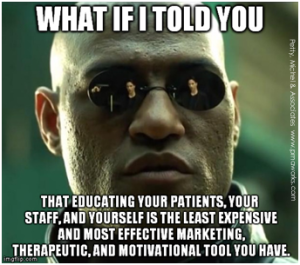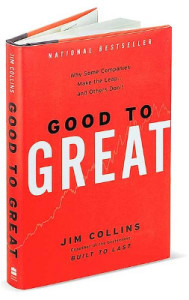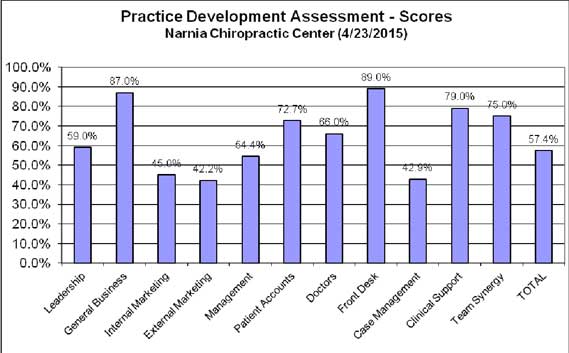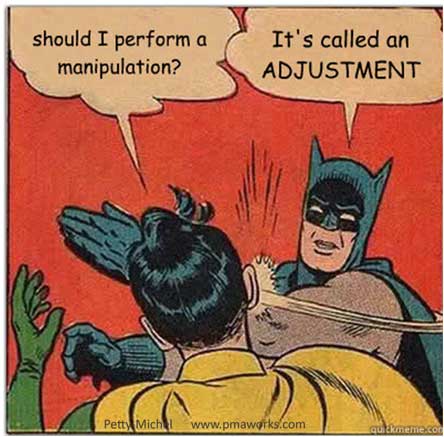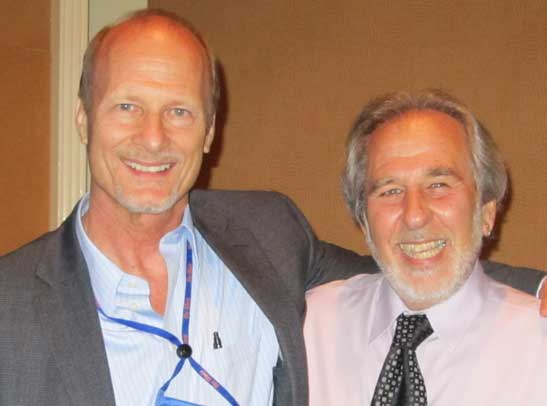[If you think that you could make more money selling pharmaceuticals, injecting patients with vaccines and promoting flu shots in front of your office, these recommendations are not for you. For those matters, you might want to ask Palmer Chiropractic College or the Wisconsin Chiropractic Association for their opinions.]
What strategic moves should you be taking now to make sure that you have a better year in 2015 and in years to come?
After reviewing current literature and statistics, and based upon my observations and experience, I have put together a report which makes a number of recommendations that can be helpful to you. I have also included an extensive list of references for your further study.
The report contains a lot of information and so it is only for the serious practice executive. It will be a useful resource for you to refer to while you implement some of the suggestions I offer. Reading time is about 15 minutes. It offers new views on practice marketing, management, and leadership, with 25 specific recommendations. To go straight to the main course, go here:
Here is a shorter version:
Executive Summary – 10 Strategies to Prosper and Flourish in 2015 and Beyond
1. Know Your Environment. The Medical-Pharmaceutical industries are spending more to dominate the market place. Their efforts are becoming more pervasive in reach and more covert in manipulation. At the same time, wellness statistics continue to grow. More people are turning to organic foods and are focused on wellness.
2. Marketing Positioning. My recommendation is to embrace the popular movement towards natural health and own it. Be its champion. You are the Healthy Life Doctors. This is your niche.
3. Unique Selling Proposition. Stay committed to your core services, but articulate your Unique Selling Proposition to your specific market niche(s). Not everyone is your patient. Select certain markets that are already reaching for your type of services: people fed up with drugs, baby boomers who want to stay healthy, mothers who want to avoid drugs for their children, athletes, employers who want healthy employees, etc.
4. Get More For Less. Watch your economics but don’t get stuck in a scarcity mindset. Central to economics is a return on investment -ROI. Invest in yourself and especially in making your support team expert professionals. Learn and apply the Pareto Principle (how 80 percent of your results come from just 20% of your efforts).
5. Insurance or Cash? Yes! Take insurance but don’t kowtow to the Insurance Cartel. There are millions of people who want help and can pay for it and are just looking for a solution. You have to let them know that you have their solution.
6. Shift from Personality Driven Practice to Team Driven Business. The successful offices of the future will be team driven and systematized. Each team member has to be an expert as a specialist, as a team member, and as a marketer. And each should try to achieve this as well. The doctor will delegate most marketing and administrative details to others.
7. Shift from Solo Practice to Group Practice. For those of you who are ready, you should join forces with other doctors in a group practice. This has not had a lot of success in the chiropractic profession as it has in other professions, but the time is right now to band together synergistically as brothers and sisters. There are many good reasons to do this now. However, it has to be set up — and maintained — correctly.
8. New Role: CEO and Leader. Why do CEO’s get paid so much? Because they can make such a positive difference in the business. Up to now in your career you have taken on administrative and marketing projects mostly from the role of doctor, or perhaps owner. The CEO role probably has not been emphasized. Shifting to the role of CEO changes everything. Growing a business becomes easier, you have more time available, and you make more money.
9. Seek Out and Integrate Your Greater Purposes with Your Business. The power for your office, and you, comes from those things that mean the most. This would include your family and your spiritual pursuits. But our world is smaller and we live in a networked economy and culture. Your office, in its own right, has to be a leader in your community and environment and contribute in some way beyond its walls. This also includes having a voice in your professional organization. Your greater purposes also include your personal hobbies. Since you are not working on an assembly line, many of these purposes should be integrated into your work.
10. Get an Executive Coach. Why does corporate America spend over a billion dollars on executive coaching? Because the return of investment proves to be at least 7 times, and in some cases, 10-49 times cost. Executive coaching doesn’t cost – it pays.
An executive coach is different from a clinical coach. An executive coach will help you be a better CEO – a better leader, marketer and manager who builds a team driven business which allows you to delegate most non clinical duties. He or she will help you sort out what tasks will produce the greatest positive effects for your business, and help you get those tasks done. He or she will be your partner, counselor, confident, coach, teacher, drill instructor, and friend.
The future has never looked brighter, but the challenges are not slight. This makes your success all the more important – and sweeter.
Ed Petty


